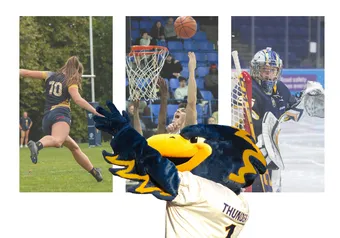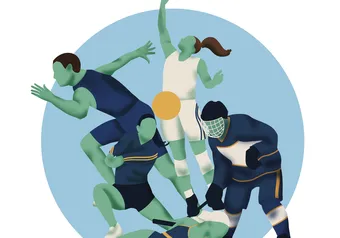Safety. It is a primary concern for many, particularly when participating in campus life. What would you do if someone attacked you while walking at night? Grabbed your purse in the street?
Krav Maga Global – UBC Division was first started in 2015. As explained by women’s division captain Sukhman Chahal, although UBC itself has many martial arts clubs, the publicity that year around sexual assault on campus showcased a gap in the combative clubs available to students: self-defence. With that in mind, two first-year students — both with a military background — founded the club.
The concept? Unarmed combat skills for self-defence in life threatening situations.
“[Krav Maga is] strictly supposed to be used for self-defence and the techniques they teach are usually based on first avoiding [an assault] and ending it as quickly as possible. So you are not supposed to be spending more than usually 10-15 seconds for most for the techniques,” Chahal said.
Today, the club is the only student-run branch of Krav Maga worldwide and one of only two branches overall in Canada. The practice itself, founded in Israel, now has locations spanning five continents — the club here at UBC is only one small piece of a growing community of people mastering self-defence.
With that in mind, Krav Maga can be a lifelong learning commitment, with the opportunity to continuing leveling up — passing tests for various level of difficulty in Krav Maga, graded by international evaluators — even after students leave UBC.
Here on campus, there is a growing interest in learning those skills taught through Krav Maga, as the club’s enrolment expanded to over 160 members last year. With that growing demand, the club was able to evolve to two divisions last year: general and women specific.
General classes cover things like knife attacks, ground attacks and various different defences — it covers the broad scale of need-to-knows for successful, quick self-defence. For the women’s classes, the instructors runs through everything from hair pulls to being mounted in a full assault. Even the locations of the assaults can vary, as they practice all scenarios from small spaces to sitting in a chair.
For Chahal, the lessons taught in the classes are invaluable.
“Even if by chance you never end up using any of these things, you are better off knowing it than not knowing it,” Chahal said.
“Personally, I find that you can be like ‘if someone came after me, I would do something, I wouldn’t take it, I’d fight back,’ but there’s a difference between having that aggression and that will to fight and knowing that I properly know how to fight.”
Krys Yuan, a member of the club since 2015, sees similar benefits for women choosing to learn the practice, as do many other women participating in the various self-defence programs on campus.
“It’s building up confidence because you know, as women, you walk around in a public space and you’re taught to sort of shrink and reduce the amount of space you take,” she said. “But, with this skill, you know you can take the amount of space that you need regardless.”
This school year, the club hopes to continue to grow the women’s division by adding a women’s seminar to their event lineup. Likely only a one day event, it hopes to add more depth to the women’s program with guest instructors on the day, similar to their event this past year with Krav Maga instructors Rebecca O’Connor and Tito Otero.
For others, like club member Honami Kawamura, the applicability of the practice to everyday life is enough reason to continue coming to classes after joining the club two years ago.
“I think it was just because it was so real,” Kawamura explained. “It’s not a martial art specifically. It’s based on real life situations that you can imagine yourself being in, so I think that’s why [it struck a cord with me].”
Share this article
First online



![['']](https://storage.googleapis.com/ubyssey/media/renditions/21397427_1672986392713515_188937.width-1000.format-webp.webp)


